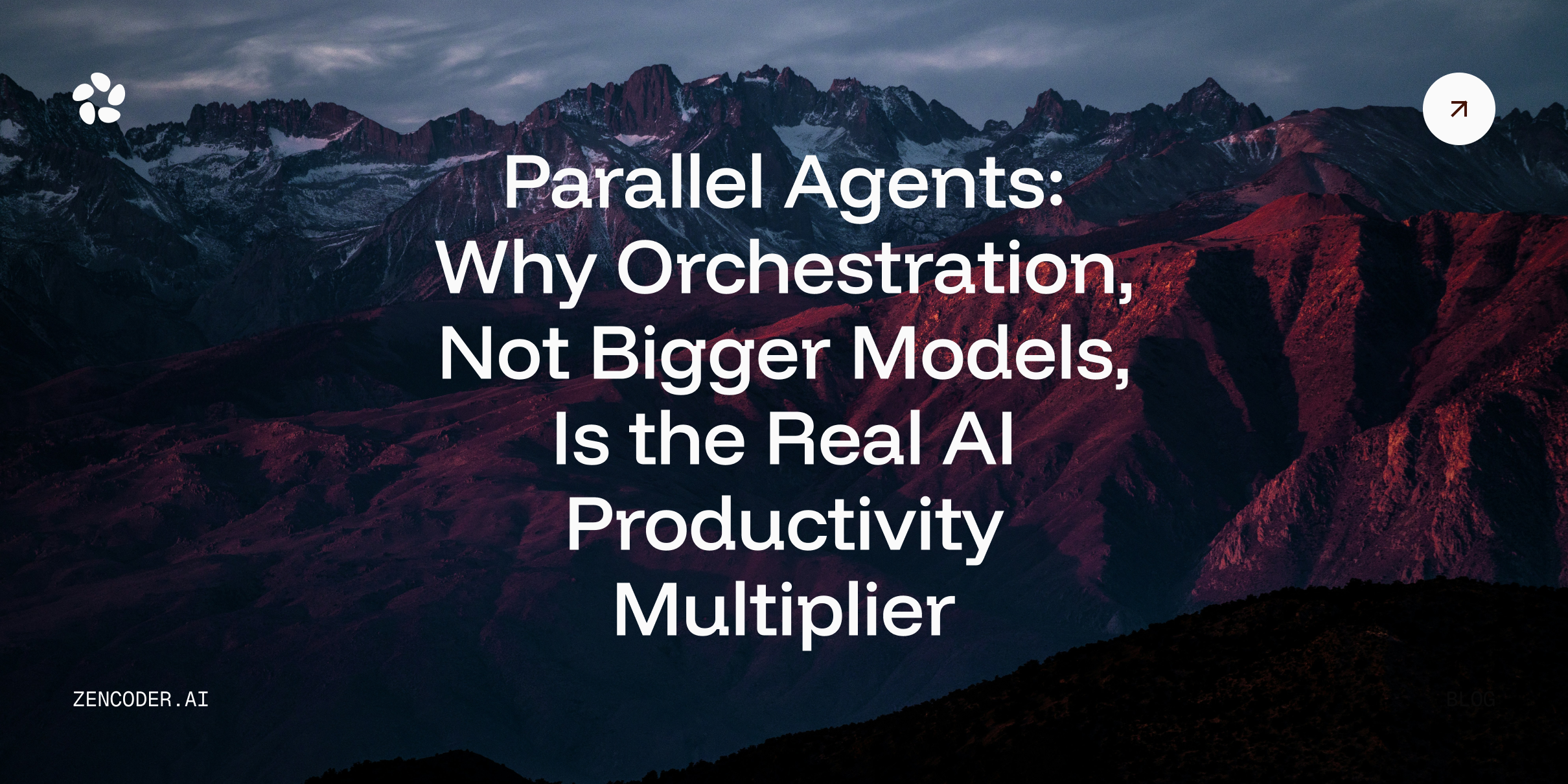Introduction
Picture this: It's 2 AM, you're on your fifth coffee, and you're staring at a screen full of code that looks like it was written by a cat walking across your keyboard. We've all been there. But what if I told you that the future of coding isn't bleary-eyed developers fueled by caffeine, but rather AI code generators that can understand not just the structure of your code, but its very essence?
Welcome to the world of AI code generation, where algorithms tackle syntax and semantics to reshape software development.
Syntax, the grammar of code, is the framework that ensures our digital instructions are readable by compilers and interpreters. It's the rulebook that keeps our code in check, preventing chaos in the digital realm.
Semantics, on the other hand, delves into the soul of the code, concerned with what it actually does rather than just how it's written. It's the difference between writing code that runs and writing code that sings.
Syntax: The Grammar of Code
What is Syntax, and Why Does It Matter?
In the coding world, syntax is like the difference between "Let's eat, Grandma" and "Let's eat Grandma." One tiny comma can mean the difference between a family dinner and an act of cannibalism. In code, it's the difference between a functioning program and a spectacular crash.
Syntax defines the rules and structure governing how code must be written to be valid in a given programming language. It encompasses everything from the correct use of keywords and operators to the proper structuring of statements and blocks of code.
But why is syntax so crucial?
Imagine trying to communicate in a language where word order doesn't matter, punctuation is optional, and spelling is a mere suggestion. Chaos, right?
In programming, proper syntax ensures that our instructions are unambiguous and can be parsed correctly by compilers and interpreters. It's the first line of defense against errors, ensuring that our digital instructions are comprehensible to machines.
How AI Recognizes and Completes Code Syntax
Imagine an AI as a voracious reader, consuming millions of lines of code faster than you can say "Stack Overflow."
AI code completion and syntax analysis rely on several key techniques:
- Pattern Recognition: AI models, trained on vast code datasets, recognize common structures across various programming languages. They become adept at identifying recurring patterns, much like how an experienced developer can spot familiar coding constructs at a glance.
- Statistical Analysis: By crunching numbers on how often certain code elements appear together, AI can predict what should come next with uncanny accuracy.
- Context-Aware Completion: Modern AI doesn't just look at individual lines in isolation. It considers the broader context, much like how you'd understand a joke based on the conversation leading up to it. This contextual awareness allows AI to suggest completions that aren't just syntactically correct, but actually make sense in the broader scope of your project.
- Language-Specific Models: Many AI code generators are trained on specific programming languages, allowing them to capture the nuances and idiosyncrasies of each language's syntax.
- Tokenization and Parsing: AI systems often break down code into tokens and parse these tokens to understand the syntactic structure, much like a compiler would. This allows them to build a deep understanding of the code's structure and offer more accurate suggestions.
These techniques enable AI code generators to offer real-time syntax suggestions, auto-complete code snippets, and even generate entire functions or classes with correct syntactical structure.
Semantics: The Meaning Behind the Code
What is Semantics, and Why is it Crucial?
If syntax is the grammar of code, semantics is its poetry. It's about understanding the intent and functionality behind the code, not just its structure. While syntax ensures that code is written correctly, semantics delves into whether the code actually does what it's supposed to do.
Semantic understanding in programming involves grasping concepts like:
- The purpose of specific functions or classes
- Relationships between different code components
- Expected behavior under various conditions
- Implications of different algorithmic choices
- The efficient use of data structures and control flow
This level of understanding is crucial for writing effective, efficient, and bug-free code. It's also essential for tasks like code optimization, refactoring, and debugging. After all, code that runs isn't necessarily code that works well.
Consider this: you could write a syntactically perfect function that sorts a list of numbers, but if it uses a bubble sort algorithm for a large dataset, it's semantically suboptimal. Understanding semantics allows developers (and AI) to make informed decisions about the best approaches to solving problems.
Challenges of AI in Grasping Code Semantics
Grasping semantics is like trying to explain the concept of "cool" to a robot. It's not impossible, but it's definitely a challenge. AI has to contend with several hurdles when it comes to understanding the meaning behind the code:
- The "What Were They Thinking?" Problem: Deciphering a programmer's intent, especially when the code is... let's say, creatively written. Humans often write code in ways that make sense to them but might be puzzling to others (including AI). Understanding the reasoning behind certain coding choices can be a significant challenge.
- The "It's Not You, It's the Context" Dilemma: Sometimes, understanding a single line of code requires knowledge of the entire project architecture. AI needs to grasp the bigger picture to make sense of individual components, which is akin to understanding a single puzzle piece in the context of the entire jigsaw.
- The "Lost in Translation" Issue: Bridging the gap between human language (in comments and documentation) and machine code. Comments are meant to explain code, but they can sometimes be ambiguous, outdated, or even misleading. AI needs to reconcile the natural language explanations with the actual code functionality.
The quest to imbue AI with true code comprehension is ongoing, pushing the boundaries of what's possible in machine learning and artificial intelligence.
AI Techniques for Semantic Understanding
Machine Learning for Code Analysis
Machine Learning, particularly deep learning architectures, forms the backbone of many AI code generation systems. These models are trained on vast repositories of code, learning to recognize patterns and relationships that go beyond mere syntax. Some key ML techniques include:
- Deep Neural Networks: These networks can capture long-range dependencies in code, essential for grasping overall program structure and flow. AI can see the forest and the trees simultaneously i.e. the ability to see the details and the big picture at once.
- Reinforcement Learning: This technique is used to train AI models to make sequences of decisions, mimicking the process of writing code step by step. It helps in understanding the consequences of code choices on overall program behavior.
- Transfer Learning: Models pre-trained on large code datasets can be fine-tuned for specific languages or domains, allowing them to transfer general coding knowledge to more specialized tasks..
These deep learning models are trained on large code datasets with annotations, learning the intricate dance between syntax and semantics. They become adept at not just recognizing code patterns, but understanding their implications and potential uses.
Natural Language Processing for Code
While code is not natural language, many Natural Language Processing techniques have been successfully adapted for code analysis:
- Tokenization and Embedding: Code is broken down into tokens (like variables, functions, and operators) which are then embedded into high-dimensional vectors. These embeddings capture semantic relationships between different code elements, allowing AI to understand how various parts of the code relate to each other.
- Sequence-to-Sequence Models: Originally developed for language translation, these models are now used to "translate" between natural language descriptions and code, or between different programming languages. It's like having an AI polyglot that can understand your project requirements and translate them into functional code.
- Attention Mechanisms: These allow AI models to focus on relevant parts of the input when generating code, crucial for maintaining context and coherence in longer code segments. It's similar to how a human developer might focus on specific parts of a codebase when working on a particular feature.
- Semantic Parsing: This involves converting natural language descriptions or partial code snippets into formal representations of program logic. It helps AI bridge the gap between human intent and machine-readable instructions.
Limitations and Considerations
As impressive as AI code generators have become in handling both syntax and semantics, it's crucial to understand their limitations and the ongoing need for human oversight. Let's explore some of the key considerations:
Potential for Syntax Errors Despite Correct Completion
While AI excels at pattern recognition and can generate syntactically correct code in many cases, it's not immune to errors:
- Novel Contexts: When faced with unique or rarely seen code structures, AI may struggle to maintain syntactic accuracy. It's like asking a grammar checker to proofread a poem written in an experimental style.
- Language Evolution: Programming languages evolve, and AI models may not always be up-to-date with the latest syntactical changes or best practices. It's akin to using last year's dictionary to write this year's novel.
- Misinterpretation of Context: AI might misunderstand the broader context of the code, leading to syntactically correct but contextually inappropriate suggestions. Imagine asking for directions and getting perfectly clear instructions... to the wrong destination.
- Incomplete Information: If the AI model doesn't have access to the full codebase or project structure, it may make incorrect assumptions about available resources or dependencies. It's like trying to complete a puzzle without all the pieces.
Semantic Misunderstandings and Logical Errors
The challenge of truly understanding code semantics means that AI-generated code can sometimes contain logical errors or misinterpret the intended functionality:
- Algorithmic Inefficiencies: AI might generate code that works but is not optimized or efficient, especially for complex algorithms. It's the difference between taking a scenic route and the most direct path to a destination.
- Security Vulnerabilities: Without a deep understanding of security best practices, AI might inadvertently introduce vulnerabilities in the generated code. It's like building a house with a state-of-the-art security system but leaving a window open.
- Edge Cases: AI may not anticipate all possible edge cases or exceptional scenarios that human programmers might consider. It's akin to planning a picnic and forgetting to account for the possibility of rain.
- Contextual Nuances: The subtle nuances of project-specific requirements or domain-specific logic might be lost on AI systems. It's like translating a joke verbatim into another language and losing the punchline.
Importance of Human Oversight and Review
Given these limitations, human oversight remains crucial in the AI-assisted coding process:
- Code Review: All AI-generated code should be thoroughly reviewed by experienced developers to catch potential errors and ensure alignment with project goals. It's not about distrust; it's about collaboration between human insight and machine efficiency.
- Testing and Validation: Comprehensive testing, including edge case scenarios, is essential to verify the correctness and robustness of AI-generated code. Trust, but verify.
- Contextual Understanding: Human developers bring a deeper understanding of the project context, business requirements, and long-term maintainability considerations. We're the ones who can see beyond the immediate task to the bigger picture.
- Ethical Considerations: Humans must ensure that AI-generated code adheres to ethical guidelines and doesn't introduce biases or unfair practices. We're the moral compass in the coding process.
- Continuous Learning: The feedback loop between human developers and AI systems is crucial for improving the capabilities of code generators over time. Every correction, every improvement we make helps train the next generation of AI coders.
Conclusion
As we've journeyed through the binary forests and algorithmic jungles of AI code generation, we've seen how these silicon-powered marvels are transforming the way we write, analyze, and debug code. From the syntax-savvy pattern recognition to the increasingly sophisticated semantic understanding, AI is becoming an indispensable ally in the world of software development.
Yet, as impressive as these digital coding companions are, they're not ready to star in "I, Programmer." The human touch – with our capacity for creativity, contextual understanding, and ability to appreciate a good coding pun – remains irreplaceable.
As for the future, the collaboration between human developers and AI assistants promises a coding utopia where bugs are rare, productivity soars, and developers can focus on the truly creative aspects of software design. Let's embrace these powerful tools, always remembering that behind every great piece of software is a human developer – possibly with an AI sidekick – ready to turn caffeine into code and dreams into digital reality. Happy coding, and may your bugs be few and your compilations swift!

_%20The%20Engineering%20Method%20AI%20Needed%20(1).webp)

